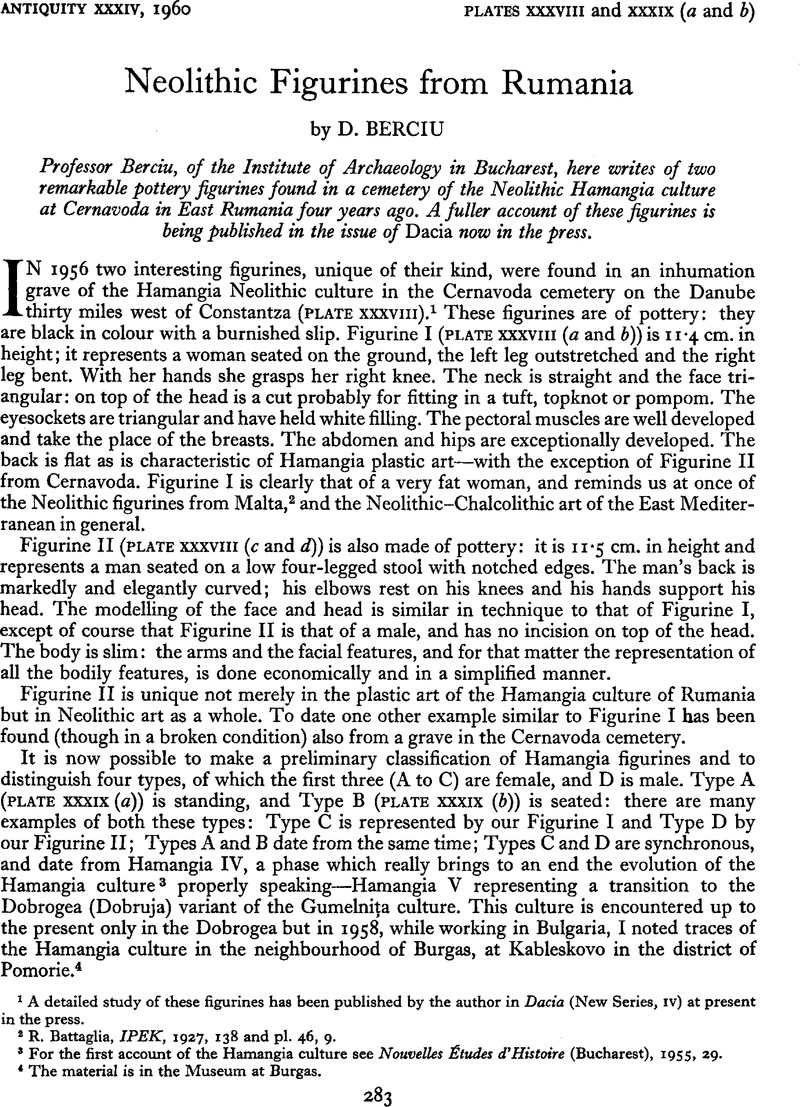No CrossRef data available.
Article contents
Neolithic Figurines from Rumania
Published online by Cambridge University Press: 02 January 2015
Abstract

- Type
- Research Article
- Information
- Copyright
- Copyright © Antiquity Publications Ltd 1960
References
1 A detailed study of these figurines has been published by the author in Dacia (New Series, IV) at present in the press.
2 R. Battaglia, IPEK, 1927, 138 and pl. 46, 9.
3 For the first account of the Hamangia culture see Nouvelles Études d’Histoire (Bucharest), 1955, 29.
4 The material is in the Museum at Burgas.
5 The point at issue is its relation with the Boian culture of Bulgaria, which is found only between the Balkans and the Danube. To the south of the Balkans there is no Boian culture, but only excised pottery done in the style of Boian ware.
6 According to the recent Trojan chronology proposed by J. M. Mellaart, Anatolian Studies, 1959, 165. The Neolithic chronology of Rumania supports Mellaart’s proposals.
7 Determined in the Laboratory at Groningen.
8 Maria Gimbutas, The Prehistory of Eastern Europe, 1956, 54 and fig. 25.
9 The figurines of the Hamangia culture have been found both in tombs and houses, as have the figurines of the Gumelnita culture, and those found in Asia Minor.


